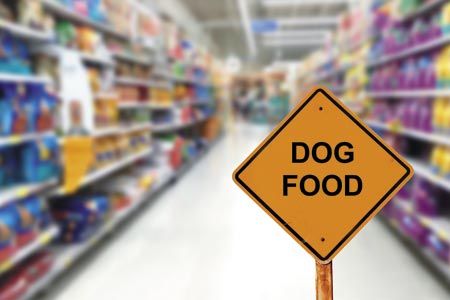Hey doc, have your veterinary clients been fooled by this doc(umentary)?
One colleague's take on the Netflix documentary Pet Fooled, which sets out to "expose" the pet food industry.

Warning! Your clients might be a little more suspicious of what seems to be a deluge of pet food options, thanks to a new documentary. (Shutterstock)I recently popped open my laptop and settled into my recliner to watch a movie that many of our clients are also watching, even as you read this article.
Pet Fooled, a new documentary on Netflix, features integrative veterinarians Karen Becker and Barbara Royal, Oprah's veterinarian. The gist of the documentary is this: The bulk of the pet food market is owned by five main companies, yet the pet food consumer is dazzled by an endless array of products to choose from in the pet store. How different are these pet foods, and is what's inside really as healthy as the shiny outer packaging would have you believe?
What Pet Fooled claims
The documentary rehashes the 2007 melamine recall, complete with some heart-rending personal stories from people who lost pets to the contaminated food. One heartbroken pet owner says, “It has damaged my trust. I don't trust companies anymore. They don't care about me. They care about my money.”
Dr. Royal tells the camera that the pet food industry is telling us what to feed our pets based more on what they want to sell us than on what's necessarily good for the pet, and that corn, wheat and soy cause allergies and disease in our pets. Now that corn and wheat are subsidized and cheap to produce, Dr. Royal says, it makes adding those ingredients a super cheap way to make a food for somebody who can't say no. She says we can abuse dogs and cats nutritionally by feeding them foods that are not biologically appropriate, and they can have overall degenerative changes and decreased vitality due to their diet.
The documentary also slams the pet food industry for using substandard protein sources, such as nefarious byproduct. In the movie, byproduct is defined as what's left over after an animal has been slaughtered and all the edible parts have been removed. The criticism lies in the mystery of the meats being used. (Mind you-this is narrative dubbed over footage of a dead animal being consumed by maggots. Yes. I just threw up in my mouth.)
The narrator, director Kohl Harrington, says, “Since major pet food companies are involved with and have influence over vet students, lack of education surrounding raw diets exists heavily among traditional vets.” Dr. Becker follows this up by drawing a parallel between the pet food industry today and the tobacco industry in the '40s and '50s, when you had medical doctors recommend the use of tobacco-not because it was a conspiracy or because they believed that they were in any way being harmful; they just didn't know. Dr. Becker says it's very similar to what's happening in the pet food industry today: You have well-meaning, lovely veterinarians recommending foods, not because they have sound nutritional background, but because that's all they know.
Do I have your attention? Good.
My reaction
I found most of this shock-you-mentary jaw droppingly inflammatory and inaccurate. You will have to watch it for yourself. As irritated as I was after watching it (which I think was the point), I actually find value in this piece in that if we approach it right, it could open up lines of communication between veterinarians and pet owners. I think the take-home point for us veterinarians is that this is the media that our clients are consuming. It's out there trending on Netflix, and there's a growing pool of pet owners that are extremely concerned and interested about the food they feed their pets.
A 2017 survey of over 2,000 respondents who are feeding raw animal products (RAP) found that people feeding RAP reported lower levels of trust in veterinary advice both “in general” and “with respect to nutrition” than pet owners not feeding RAP.1 The survey stated that 20% of pet owners feeding RAP relied on online resources to determine what or how much RAP to feed, and only 9% consulted with a veterinarian in making decisions about feeding RAP. Most pet owners, whether they fed commercial diets or RAP, reported that a discussion regarding their pets' nutrition does not occur at every veterinary appointment. Clearly, there's room for improvement in veterinarian-client communication in regard to nutrition and trust.
My initial thought is if veterinarians approach this right, Pet Fooled could open up new lines of communication with our clients. Because, when it comes down to it, we all want the food we are feeding our pets to be healthy and safe-so we are all on the same team. Clients have more opportunities to self-educate than ever-it's up to you to curate that information and provide an expert sounding board to help your clients sift through a sea of information, including documentaries. Read this to see what I think are the most likely questions your clients will have after watching the documentary and some ideas from me and Joe Bartges, DVM, PhD, DACVIM, DACVN, on how to respond.
Reference
1. Morgan SK, Willis S, Shepherd ML. Survey of owner motivations and veterinary input of owners feeding diets containing raw animal products. PeerJ 2017 Mar 2;5:e3031.
Episode 67: Choosing trusted supplements
October 20th 2021In this episode of The Vet Blast Podcast, Dr Adam Christman chats with Dr Janice Huntingford about the latest insights into selecting the best supplements for your patients, including the importance of recommending and utilizing products that have a substantial amount of science and research behind them. (Sponsored by Vetoquinol)
Listen